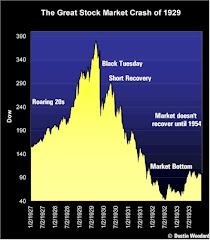It is no surprise that these plans are in trouble. They are in trouble for many reasons.
- Outrageous benefits - 70% of final salary for life beginning as young as age 55
- Poor stock markets - These plans expect a 6.5% rate of return in order to fund the plans. The TSX as of today has a total 10 year rate of return of 11.18% or barely 1% per year.
- Low employee contribution rates - One plan has a contribution by the "employer", (taxpayer) of 270% of the employee contribution Last year for example in the McMaster plan contributions were $38.4 million from taxpayers and $13.8 from employees. Annual financial Report (page 4)
- Ignoring plan valuations - The 2009 Annual Financial Report (page 39) showed that McMaster was short $297 million in the plan. Yet nothing was done... taxpayers will bail us out!
- Skyrocketing compensation costs - Governments have been dropping cash from helicopters into Ontario universities. Universities have no reason to believe this will end soon. If it does... boost tuition!
The value of pension benefits paid to university staff is based on a Final Salary also called a Defined Benefit pension. Average tenured Canadian Prof earns north of $100,000
The pension target is based on 70% of final salary. A university employee retiring at $100,000 per year salary will get a pension worth $70,000 (including $11,000 in CPP) when fully qualified.
Currently the maximum an employee will pay in contributions is $799 per month or $9,500 per year. This is based on $132,000 annual salary which will earn a $92,000 annual pension. Try and work out the numbers. Assuming maximum contributions for 35 years into the pension for a total $ 332,500. He will get a $92,000 pension for say 30 years or a pay out of $2.7 Million.
Poor Stock Markets
We have known for two years the devastating effects of the markets on universities and their pensions.
UofT reports $1.3-billion loss on investments
Why have universities not started before now to deal with the problem?
Low Employee Contribution Rates
The CD Howe Institute has shown us that the cost of these gold-plated pensions is 34% of annual salary. The taxpayer contribution rate is 270 % of the employee rate. Still these plans are seriously underfunded with heavy taxpayer contributions.
From our example above the $130,000 per year employee needs an annual contribution of $44,880 into his plan (34%0. We see his maximum contribution is $ 9,500. The taxpayer kicks in $25,650 and this means the plan is still short $9,700 short.
All this coming from universities who are supposed to be training our accountants and actuaries.
Skyrocketing Compensation Costs
A report from MacLeans shows that there are some pretty juicy compensation amounts paid in Ontario universities.Of course these will lead to some big pensions as well. Winning the Pension Lottery
Professor pay varies greatly by discipline
The highest paid full professor at Rotman was paid a salary of $328,501.96 while the classics department’s top prof took home a salary of $160,076.04. Eight faculty members broke the $300,000 salary bracket at Rotman last year while no one in classics even broke $175,000.A salary of $328,000 will generate a pension of 70% or $229,600. If paid out for 30 years this will amount to a total payout of just short of $7 Million.
Of those making more than $100,000, the average salary in the management school is $196,704.78
Even a measly salary of $196,000 will pay out a pension of $137,000. The total payout could exceed $ 4 Million.
On last not as an example of how these things work.
Bill Tufts
Fair Pensions For All



No comments:
Post a Comment